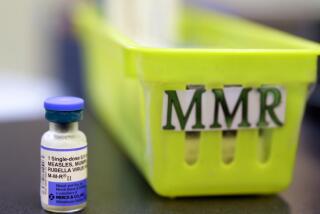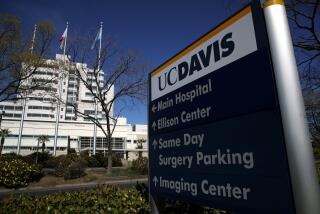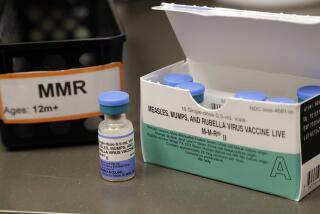Amid measles outbreak, more than 1,000 told to stay home from L.A. universities
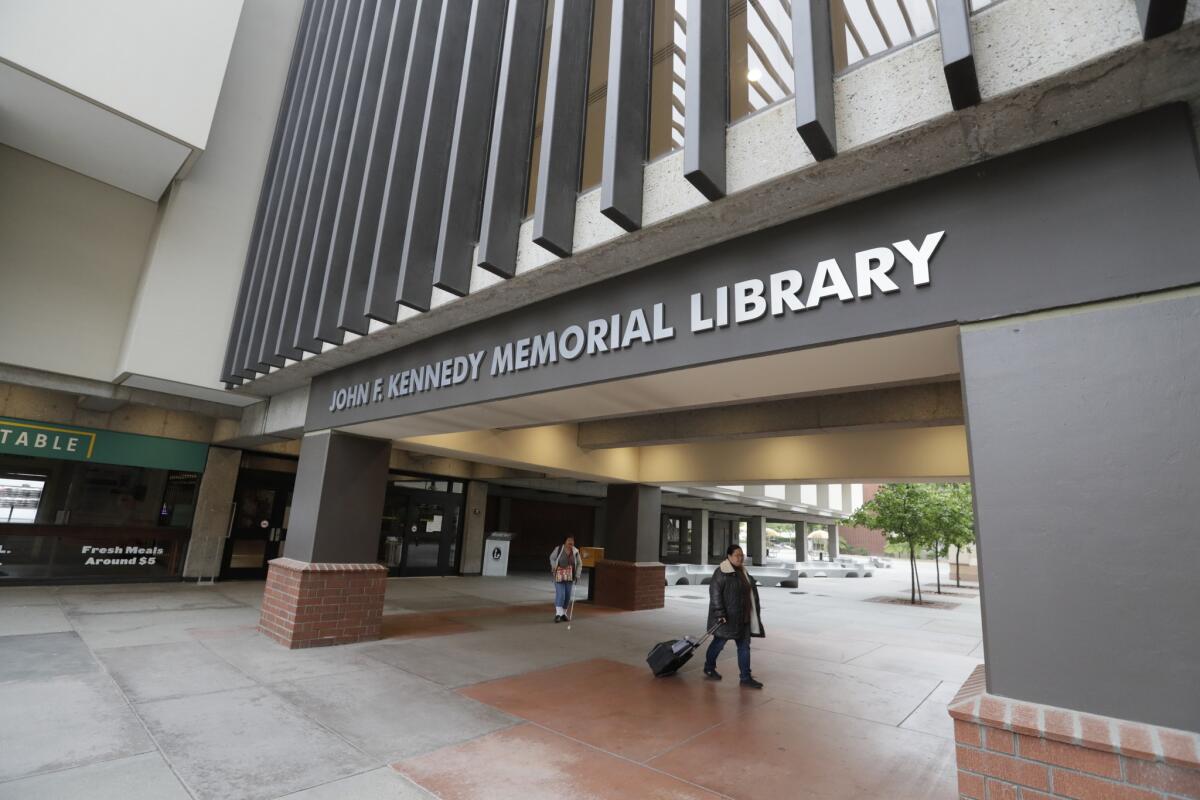
- Share via
Los Angeles County health officials told more than 1,000 college students and staff members who might have been exposed to measles to stay home this week, in one of the largest quarantine orders in state history.
The declaration has raised questions about how effective the orders will be and how exactly they will be implemented at UCLA and Cal State Los Angeles, where students have been diagnosed with the disease. But there is one thing public health experts agree on: They don’t envy L.A.
Measles is one of the most contagious diseases in the world, and a single case can lead to hundreds more. Banishing people to their homes becomes a necessary last resort in a measles outbreak, experts say, especially on college campuses where cases can rapidly spread.
“What else can you do?” said Columbia University public health professor Dr. Stephen Morse. “It’s disruptive, it’s resource-intensive and it doesn’t make people feel very pleased — this is basically the measure you’re left with.”
The five people diagnosed with measles so far in L.A. County this year include a UCLA student and a Cal State L.A. student. The number of people in quarantine is dropping daily as people provide health officials with their immunization records, but as of Friday afternoon, 650 people, most of them Cal State L.A. students, remained in isolation, according to officials.
The orders are a major undertaking for health officials. If more people do get measles on either of the campuses, even more students might have to be quarantined, possibly through the end of the school year, officials say.
“Thank God we’re not confronted with this on my campus,” said one East Coast university medical professor.
Health officials in other parts of the country have also been turning to extreme measures to try to stop measles outbreaks from mushrooming, including barring unvaccinated children from public spaces and mandating vaccines under penalty of fines.
The efforts are the result of public health officials’ desperation as 2019 shapes up to be the worst measles year in decades in the United States. So far this year, 625 people have been diagnosed with measles nationwide, the highest case count since the disease was considered eliminated in 2000.
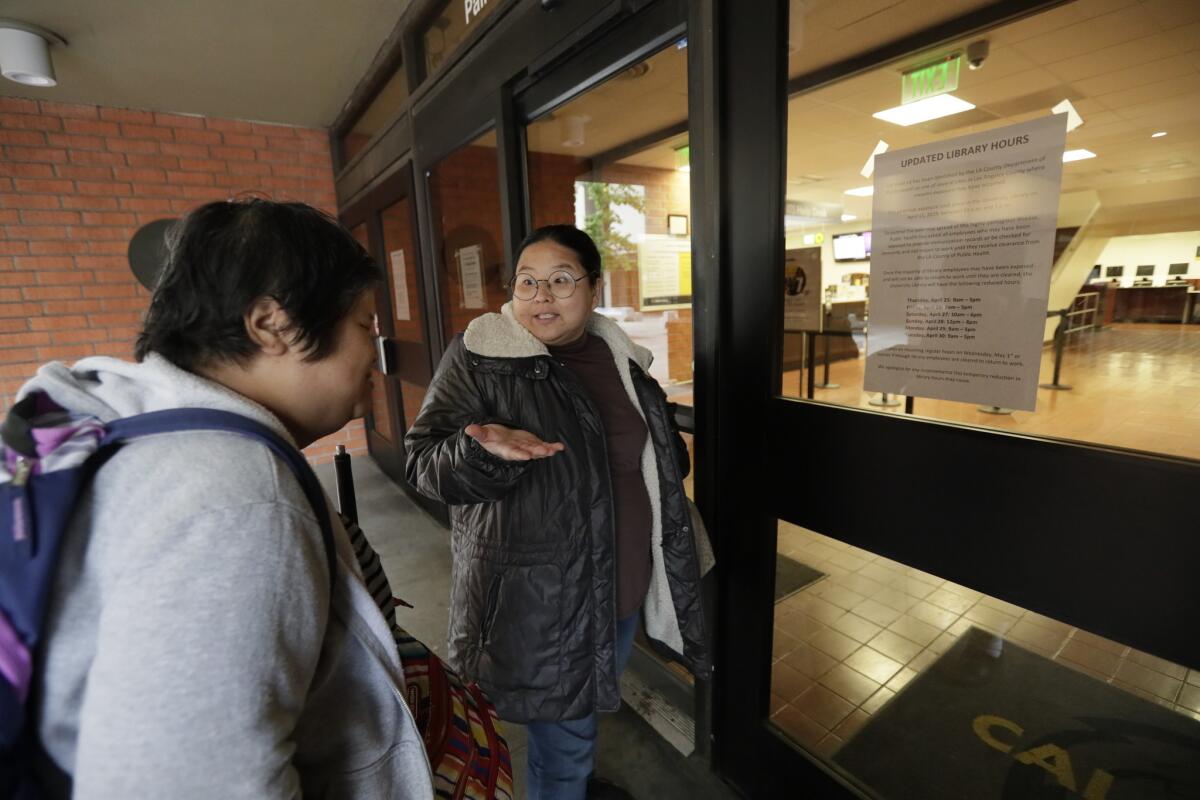
***
On Thursday evening, UCLA senior Johnny Schmidt was riding a city bus when he received an unusually long text message. It was from the UCLA dean of students.
“You may have been exposed to measles, which is very contagious,” the text read. “You are mandated to isolate yourself until you can provide proof of immunization.”
Schmidt panicked, unsure whether he needed to immediately get off the bus. But then he remembered he had been vaccinated against measles as a child.
The UC system requires that all students provide vaccination records, but the regulation only went into effect for incoming students this school year.
Schmidt asked his mother to scan his records and send them to him. Officials soon lifted his quarantine order.
UCLA sent similar messages to more than 100 students who went to class in April in the same two buildings as a student sick with measles. Schmidt attended class in both buildings.
Measles spreads through coughing and sneezing, but the virus can linger in the air for up to two hours after the sick person leaves the room. If a measles patient touched a desk or a doorknob, people can pick up measles that way too.
“Within a period of weeks, we could have around 600 people with measles here in L.A. County,” L.A. County public health department director Dr. Barbara Ferrer said in a call with reporters Friday. “That’s why we’re so serious about this.”
The order Schmidt received said he could not attend class or go anywhere else in the coming days. If he had roommates, he could not quarantine himself in his apartment, which he found confusing, he said.
Schmidt said he likely would have stayed in his apartment anyway and just informed his roommates and health officials.
“I don’t know where else I would go,” he said.
As of Friday afternoon, the number of people quarantined at UCLA had fallen to 34, with only one student who lives on campus still under the quarantine orders, according to county officials. Officials said they had made accommodations for that student to not stay in dorm buildings but did not provide further details.
At Cal State L.A., an infected student visited a campus library in April that typically has about 2,000 people in and out per day, according to county officials.
The health department’s investigation identified more than 875 students and staff who were in the library that day, according to Ferrer. As of Friday afternoon, quarantine orders remained in place for about 625 people who had not yet shown proof of immunization, she said.
Though there are roughly 1,000 people who live on-campus at Cal State L.A., none are under quarantine orders, according to campus spokesman Robert Lopez.
Health officials said they would lift the quarantine orders as soon as people showed documentation that they had been immunized or had a lab test to verify their immunity. Without that proof, people exposed at UCLA could be quarantined until Tuesday and those at Cal State L.A. until Thursday.
Officials have to quarantine so many people because they don’t know who might be spreading the virus, said Dr. Cameron Wolfe, an infectious disease specialist at Duke University. People with measles become infectious four days before their symptoms begin, so anyone who might have contracted measles needs to be kept far away from other people, he said.
In this case, that means anyone who isn’t vaccinated against measles and who might have come near the infected student or been in the same buildings around the same time, he added.
“Suddenly, that’s a lot of people,” he said. “So you can see how the concentric circles of potential contacts get pretty large, pretty quickly, especially if you’re in an environment like a college campus — getting your arms wrapped around that many people so quickly would be incredibly challenging.”
Wolfe said the vaccine can be administered in the first 72 hours after exposure to protect against developing measles but it is difficult to identify people that quickly. The exposures at UCLA and Cal State L.A. were in mid-April, so the 72-hour window has passed.
Such a large quarantine order is rare, in part because it is difficult to identify everyone a measles patient might have come into contact with on the subway or at a Starbucks. School rosters and records make that task easier.
The California health department said in a statement that it “is not aware of a recent instance of a quarantine of this size for measles in California.”
Elsewhere in the country, officials have made dramatic attempts to try to stop the spread of measles this year.
In New York City, where nearly 400 people have come down with measles, officials earlier this month began requiring some unvaccinated individuals in Brooklyn to pay a $1,000 fine if they did not get their shots. The measure was challenged in court but was upheld.
In Rockland County, northwest of New York City and also the site of a major measles outbreak, officials issued an order banning unvaccinated children from the public. That measure was overturned in court.
“There’s a big difference between what New York did and what they’re doing here,” said UC Hastings law professor Dorit Reiss.
The people in L.A. have already been exposed to measles, she said. States have the legal power to quarantine people who have been exposed to contagious diseases, she said.
Sometimes there are legal challenges against such quarantine orders, but those lawsuits typically fail, she said.
“Quarantines are traditional and used quite a bit,” she said. “This is not a new power — I think it’s making the news because it’s more widespread.”
More to Read
Sign up for Essential California
The most important California stories and recommendations in your inbox every morning.
You may occasionally receive promotional content from the Los Angeles Times.
